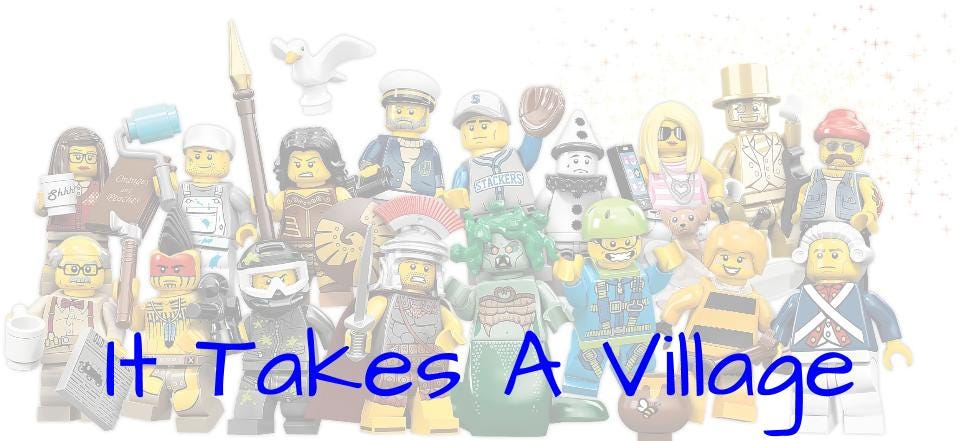Prefigurative Community Building (Part 23)
Childcare & Elder Care Collectives: Building Reciprocal Systems of Interdependence

“It takes a village to raise a child… and to care for our elders.” This simple truth, echoed across cultures and centuries, holds within it a radical possibility. But somewhere along the way, modern societies abandoned the village. The rise of the nuclear family model isolated households, severed intergenerational bonds, and outsourced care into fragmented, often exploitative markets.
The result has been deeply harmful, not just for children or elders, but for society as a whole. Atomized child care and elder care systems waste resources, erode community resilience, and reproduce Power Over dynamics at every level. Parents burn out in isolation. Elders are warehoused in facilities far from loved ones. Caregivers, often women or migrants, are underpaid and overburdened. Meanwhile, the unpaid labor of caregiving continues to underpin the global economy, sustaining the patriarchal scaffolding of Power Over by keeping caregivers economically dependent and structurally invisible.
But there’s another way. By organizing Childcare and Elder Care Collectives as Power With coordination patterns, we can begin to reclaim care as a shared responsibility, a reciprocal act of community interdependence, not as a commodity to be purchased, or a burden to be borne alone.
Step-by-Step Guide to Starting a Childcare or Elder Care Collective
Step 1: Begin with Conversations, Not Plans
Start by gathering a small circle of people who are directly affected: parents, elders, caregivers, single parents, neighbors. Host a potluck or informal meeting. Listen before proposing. Ask, “What support do you need? What can you offer?” Frame this as mutual care, not charity or service.
Resource: The Care Collective – "The Care Manifesto"
Step 2: Map Out Needs and Assets
Use participatory tools to co-map available skills, time, space (e.g. homes, yards, community rooms), and specific care needs. Include emotional labor, transportation, meal preparation, and language fluency. Let the map reflect both formal and informal contributions.
Resource: Asset Mapping Toolkit – Community Tool Box
Step 3: Form a Care Pod or Circle
Rather than building an institution, start with a decentralized care pod. A care circle could be 4–10 households or individuals who agree to co-manage caregiving tasks. Rotate responsibilities using equitable systems like timebanking or care calendars.
Resource: Shareable's "How to Create a Care Circle"
Step 4: Build Anti-Oppressive Agreements
Develop collective agreements around safety, power-sharing, inclusion, and conflict resolution. Make sure all participants have voice, not just parents or those most confident in speaking. Prioritize accessibility, cultural differences, and consent.
Resource: Anti-Oppression Resource & Training Alliance (AORTA) Toolkit
Step 5: Choose Tools for Coordination
Use low-tech tools that meet everyone’s needs. Google Calendar or a paper calendar at a shared site can schedule care shifts. Group chats (Signal, WhatsApp) can coordinate logistics. Don’t default to tools that exclude elders or non-tech users.
Resource: Loomio – Collective Decision-Making Platform
Step 6: Share the Load, Not the Labor Hierarchy
Rotate coordination roles to avoid consolidating power in a “lead caregiver.” Tasks like food prep, transportation, storytelling, and companionship should be equally valued, not just medical or child development work.
Resource: Cooperative Childcare Models – Neighborhood Parents Network
Step 7: Hold Regular Check-Ins and Reflect Together
Meet regularly to reflect, adjust care rhythms, and check in on emotional and relational dynamics. Normalize feedback. Prioritize transparency and openness. If you grow, seed a new pod rather than scaling up the original one.
Resource: Radical Elders Mutual Aid Guide
Two Existing Projects That Embody This Approach
1. Kairos Fellowship (Detroit, MI)
Not a formal childcare collective, but a community-rooted initiative that supports Black and Brown caregivers through peer-led, cooperative care circles. They reject service-provider hierarchies and instead co-create systems of reciprocal support and healing.
2. Familia Adelante (Portland, OR)
A multi-generational Latinx-led network that coordinates both childcare and elder care through mutual aid pods. They use timebanking principles and shared housing models to care across generations while building long-term community trust.
https://www.latnet.org/familia-adelante
(archived resources available via Wayback Machine or request)
Conclusion: Small Circles, Big Shifts
Reciprocal care isn’t just about meeting needs. It’s about changing relationships—between people, across generations, and within ourselves. When we replace hierarchical caregiving systems with Power With collectives, we reclaim care as a communal rhythm, not a privatized transaction. We make space for interdependence without shame.
And importantly, we don’t need to scale these projects up. We need to replicate them. Spread the model. Encourage each neighborhood, each block, each affinity group to build its own care pod. By keeping care small, rooted, and responsive, we preserve its integrity while letting the values behind it ripple outward.
Because one day, it won’t seem revolutionary to raise a child or honor an elder together. It’ll just be what we do.




There are two things I love about this article, and one thing I don't.
First, it's simple, practical, well resources yet eloquent.
Second, although the article is specific to the subject, these same steps could be mapped on to nearly any cooperative effort in a community.
The thing I DON'T love, is the fact that, once again you have taken an idea that I struggle to effectively communicate- and expressed it so much more clearly than I ever could. 🤷♂️
Well done 👏
J.